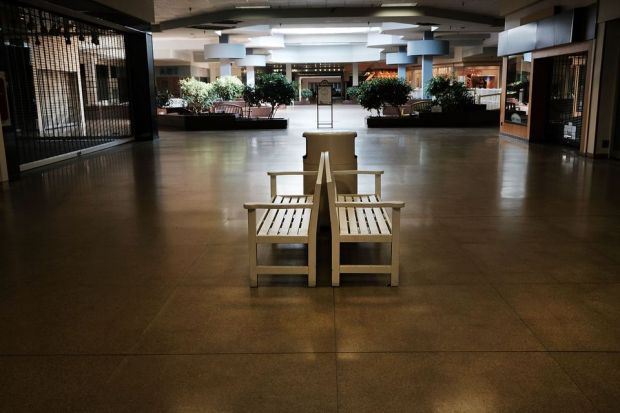 Shuttered stores dominate the interior of the Schuylkill Mall which has closed and been demolished in Frackville, Pennsylvania.
Shuttered stores dominate the interior of the Schuylkill Mall which has closed and been demolished in Frackville, Pennsylvania.
This article at Pennlive today, “Dead and dying malls of Pennsylvania, updated: More shopping centers are bleeding retailers.” prompted a revisited look at an idea that’s being floated across the nation.
What will become of these once-popular retail centers? Demolish them? Re-store them? Re-purpose them?
“The retail apocalypse has not been kind to malls. Credit Suisse recently studied the state of mall-based retail and predicted that that about one-fourth of the nation’s 1,100 shopping malls — or roughly 220 to 275 shopping centers — will close by 2022.”
The above is the lead paragraph from this Forbes Magazine article: “Why Malls Should Add Residential To Their Repurposing Plans.”
Te idea that malls offer ideal solutions for affordable, accessible residences is one that has to be considered. Many malls already are on public transportation routes; they already have plenty of parking and they’re “walkable.”
This white paper by New York State Assemblyman Stephen Englebright points out other benefits for older adults and people with disabilities:
- Mixed-use development that includes housing, shopping, amenities, and
access to transportation and professional offices provides easy, often
walkable, access to necessities for daily living and substantially reduces or eliminates use of personal cars—thereby, (1) helping non-driving older people and people with disabilities to remain independent for much longer periods of time, (2) keeping these individuals integrated with others in the community, and (3) significantly supporting the caregiving efforts of family members. - Subsidized housing in place of distressed or vacant strip malls, or developed above prosperous malls, helps address the State’s significant need for additional affordable housing, thereby helping to keep seniors and people with disabilities living in their own communities instead of relocating.
- Small numbers of affordable units above a box store or strip mall, or incorporated as a component of a mixed-income larger redevelopment of a shopping center furthers the integration of low- and moderate-income families and individuals into the wider community.
Another Forbes Magazine shares the thought: “4 Models Of The Shopping Mall Of The Future.”
In Providence, RI, “You Can Now Live Inside America’s First Shopping Mall for $550 a Month: But there’s already a waiting list for these new micro apartments.”